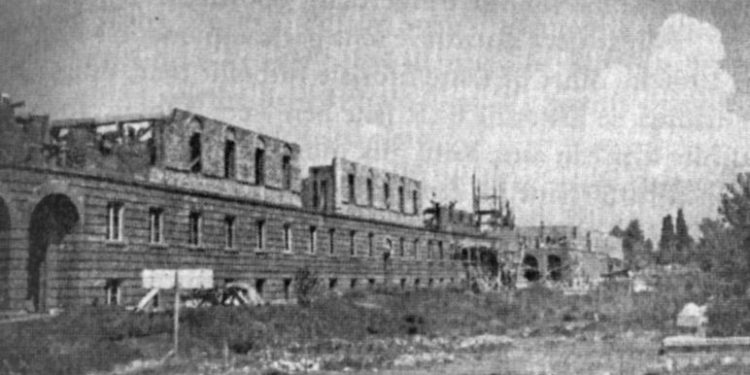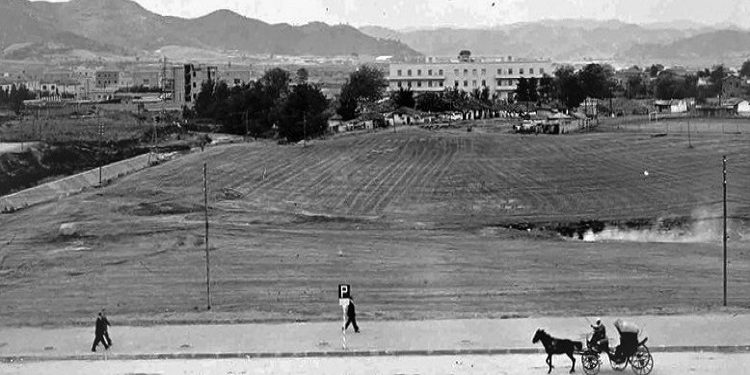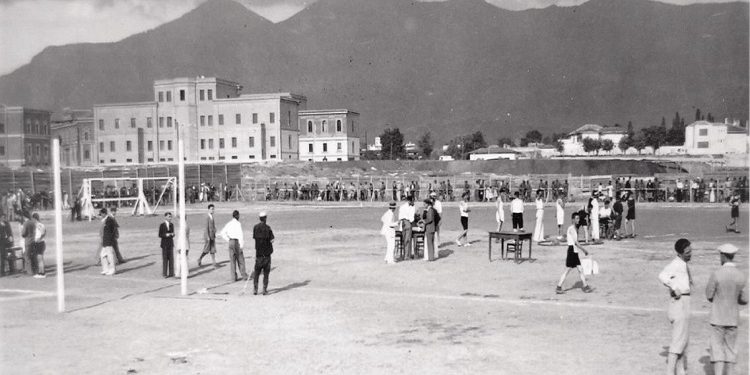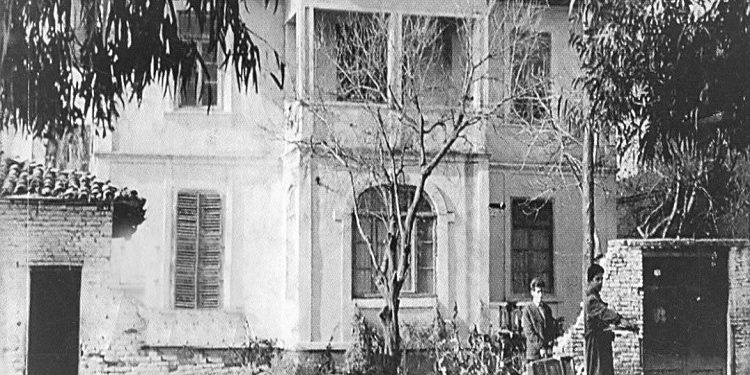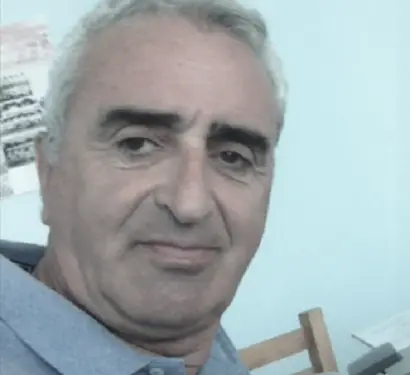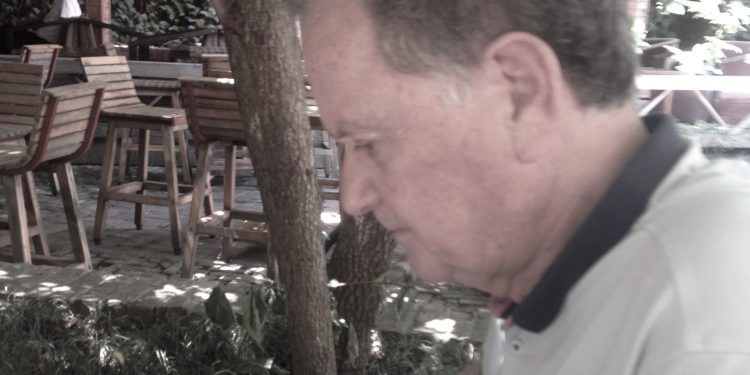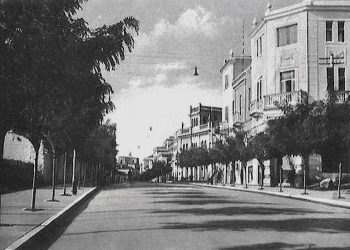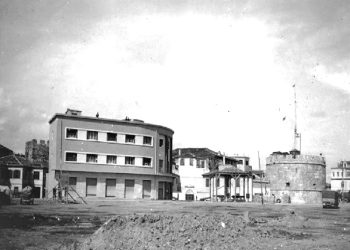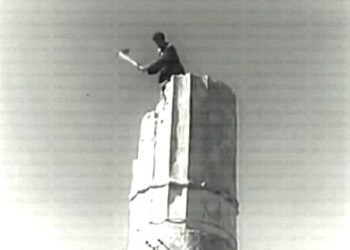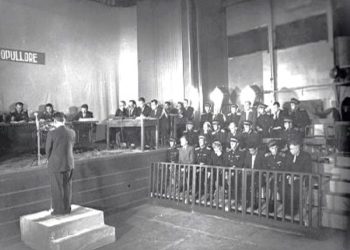From Uvil Zajmi
The unknown history of the palaces in the center of Tirana and why they were called “Shallvare”?!
Memorie.al / Apart from the locals, there are few who know why one of the most popular areas in the center of the capital is called “Shallvare”?! Considered as a point of orientation, “Shallvaret”, have kept this name despite the systems they have changed. What is the history of Shallvare and the palaces that took the name of the area? From the well-known families who lived in this area, to the sports fields, the architect Gani Strazimiri who designed them together with the “Agimi” buildings; how did Tirana change from the beginning of the modern architecture of the 30s, to the Russian one, only from the influence of the former Soviet Union? In an exclusive account, Dr. Orhan Sakiqi, by profession a construction engineer, (a well-known public figure, having also served as the chairman of the Municipal Council of Tirana in the 90s and then as an adviser to the former President of the Republic, Sali Berisha), who has lived for years in the house of the Kelliçes, in the center of “Shallvara”, he remembers their construction, the balcony-stand of the house, where Ahmet Zogu used to come to attend festive and sports activities, but also Enver Hoxha later! For all these and more, from the history of the famous neighborhood in the center of the capital, we know the interview with Mr. Sakiqi we are publishing in this article.
Mr. Sakiqi, where does this name, “Shallvaret” come from?
There are two possibilities: First, the name may have been taken from Miltiadh Shallvari, a wealthy landowner. Second, “Shallvare”, in Turkish, according to prof. Demir Alizoti means panties. This is also from the statement of the historian Agim Bardhi, according to whom, the field served as a playground for the Turkish garrison, which was located very close, in front of the State Bank. Then, in 1916, the square was used as an airstrip for the Austrian army.
The field gained sports value after the establishment of the “Tirana” Sports Club, in 1920, under the leadership of Selman Stërmas, as it was sandy soil and did not hold water. Sometime in 1925, there were some changing rooms for the athletes, then in the 1930s, the athletics track and a small wooden stand, which was destroyed during the War.
What architecture did Tirana have in the 30s?
Around the 1930s, Tirana was characterized by the beginnings of neoclassical modernism and fascism. In that period, many private villas were built, influenced by the style of early modernism in architecture. Such are the Negvatal villas, where Petrit Dume lived, the Evangjeli villa (today the Turkish embassy), Libohova, Erebara villas, etc. Designers such as Qemal Butka, Skënder Luarasi, Anton Lufi, Kristo Sotiri, etc., had studied in the West and brought the best of the times to architecture.
In the period 1939-’40, the Italians built in the “Skënderbej” square the complex of ministries, the Bank, the City Hall, the Boulevard, the Prime Minister’s Office, the Stadium, the Academy of Arts, the Maternity Hospital, as well as the Aviation Palaces, the Moscats and the White Palaces, which served as offices Italians, who lived in Tirana. They are constructions that have adapted to the terrain and have resisted changes over time. With the end of the War and the friendship that linked Albania with the Soviet Union, the structure of the building and its forms also changed. After the 1950s, it was immediately replaced by classical Russian-style constructions, and many of the villas were demolished.
In this decade, constructions relied on borrowings, typical imitations driven by the ideology of the time, under the influence of the Soviet Union. The construction of the “Shallvare” palaces, as well as many others, refers to the 1950s and 1960s, until relations with the Soviet Union were terminated. High-rise apartments, distinguished by barrack style, heavy facades, and small windows, without or with false balconies. Together with the “Shallvares” block, the “Agimi” palaces, there were also the Officers’ Palaces on “Durres Street”.
How do you remember “Shallvaren” of those years?
The alleys of “Shallvares” were paved with river stone cobblestones, with low surrounding walls, where white lilies and multi-colored lilies could be seen behind them, with houses with doors without keys. From the north, it was the house of Ali Topi, which was destroyed with the construction of buildings near the Bank; a building where the “Partizani” Sports Club was, near Topi’s house, was a three-story residence of the Shijaku family, which previously also served as a school. Next to it, there was the “Gutenberg” printing house, the first of its kind in Tirana, owned by the Ndroqi family.
Nearby, the Municipality engineer, Spiro Vinjau, and early Tirana families, Dashi, lived. Haxhi Hafiz Mahmud Dashi was the first Imam of the new Mosque, built on “Rrugë e Kavaja”, and with the contribution of the residents of the area on the land donated by the Dibra charity, Dine Hoxha. Further, Qazim Kashari’s printing press, which later served for the printing of treasury bonds. In front of the printing house, there was the house, the maternity hospital, the clinic of dr. Jani Bashos, which later served as the State Security building and known as the “House with Leaves”, as it is still called today. The well-known historian Osman Myderizi also lived in “Shallvaret”, next to him lived the famous soprano, Tefta Tashko Koço.
I still remember her death and burial ceremony today, where the funeral procession passed through the “Shallvares” field, to then pass to the Bam Tomb. There was and still is the house of the merchant, Hamdi Dizdari, today of Dr. Kapshtica. In that area, i.e. in “Shallvarja”, several other well-known families lived, such as that of Prof. Mehmet Vokshit, Hoxholli, Çuli, Zavalani, the agronomist Ali Ypi, Kusi, the family of the tennis master, Sali Nallban, the families Daja, Alliu, Lazri, Gjoçaj, the family of musicians Lela, etc. Of those buildings, today only Ndroqi’s house remains.
Your house, too, was right there?
Yes, I myself was born at the “Maternity of Dr. Bashos”, Zog’s personal physician, graduated in Austria, who also had that building as a Medical Clinic. Very close to it, was our two-story house built by Masar Këlliçi, my grandfather, a member of the first Albanian Parliament, located in the middle of the sports field, no more than 50 m away from it.
Since it did not have a central tribune for the authorities, as such, for some time the balcony of our house served. On this stand, Ahmet Zogu stood, to see the demonstration with horses carried out by the Cossacks. The field has also served for military parades and demonstrations. It was also an entertainment center for the youth of Tirana, where they gathered for folk games, religious festivals, and students who came from abroad for summer vacations. After 1944, the “Commander” also came to our stand.
Which “Commander” are you talking about?
Being the only house near the field with a balcony on the second floor that served as a grandstand to watch matches or demonstrations, Enver Hoxha himself, or the “Commander” (as he was called by the high nomenclature of the party and the state) came there Albanian of that time), just like Zogu, who had used that balcony, to follow the sports activities of the time. When Enver Hoxha came, even we family members were forced to leave a few hours before, as the house was searched. Whereas once when the Bird came, no. In our house, as I told you, we lived together with my uncle, Reshat Kelliçi, his wife, Bedihan, and their three sons, Dr. Adnani, (well-known doctor) Masari and Zamir.
Two well-known characters, the brothers Luan and Skifter Kelliçi, our relatives, also spent their adolescence there. Among its most frequented was Sejfulla Malëshova, when she was Minister of Culture in the first years after the end of the War, but also later, when she was declared an “opportunist”. In fact, in these years when he came to Reshati, my uncle, who was a close friend, our house was surrounded by Security people, who followed and monitored him everywhere, like a shadow from behind. That house existed until 1964, when it was demolished and the “20-Vjetori” school was built there.
How did the construction of buildings begin?
Since Tirana did not have enough buildings, and after the break with Yugoslavia, massive constructions were required, with the idea of being near the Central Committee, around the “Block” of the leadership, that is, of a government elite that was being created, it was decided that that area to be filled with residential buildings. To build the large block of buildings, the “Shallvares” area was used, as it was free and in the center of Tirana. The main view of “Shallvare” was well chosen, from the east, as in front of it, there was only the flower garden of “Rinia” Park, which in one night, was planted with trees by the students of the Higher Agricultural Institute of Kamza.
Initially, our house was not affected, as the construction included the area in front of it. The architect was Gani Strazimiri, who had studied in the Soviet Union. The classic Russian style was applied, as it was built in those years in the Soviet republics, and consequently also in Albania. It was mainly worked with primitive tools, with wooden skeletons, with bricks, small apartments, as well as balconies, roofed buildings, which were later removed, not preserving the old style. For almost three years, 1951-1953, the complete construction of buildings in the area of “Shallvares” continued. Then it was followed by the “Agimi” palaces, across Lana, also in total Soviet style, even projects similar to those in Moscow.
I remember construction engineers, such as: Koço Tomçe, Ballkize Nallbani, etc. At that time, I was a student at the Construction Technical College and I followed the works closely to learn from this profession. The implementer was the “21 Djetori” Construction Company. When completed, they were the tallest buildings in Tirana. Initially, the first “L”-shaped block was built, then the second, the one with an arch along Lana, and the third, “U”-shaped, in the center. The first floor, with the exception of the central part, was without shops, as there were basements, which were first used and exploited as warehouses, then as apartments for persecuted, poor families, which were given by the chairmanship of the People’s Council of the neighborhood.
Later, three main streets were built that surrounded the “Shallvareve” Block: “4 Shkurti” Street, the one parallel to “Taiwan” (today “Ibrahim Rugova” Street), “Zhan D’Ark” along Lana (today “Padër Gjergj Fishta”) and “Myslym Shyri” street, which was opened in 1964, after the Youth Sports Park was demolished. The “Nallban” Tennis Courts were moved to where they are today, next to the White Palaces, and I was the architect of the project of their arrangement. They wanted to build basketball courts, but Bilbil Klosi and Isuf Alibali insisted, as they were tennis admirers and practitioners.
What about the “Agimi” palaces, when were they built and why were they called that?
These are the years when the number of Tirana’s population grew progressively and rapidly, and precisely in that period of time, the demand for the construction of buildings, the addition of apartments, was immediate. Using the vacant land again, as soon as the building of the “Shallvareve” palace was finished, in the years 1953-’55, work was done on the construction of those “Agimi”, parallel on the other side along Lana, which were like a continuation of the palaces of ” Shallvareve”, since the same architectural structure was applied to them as well.
Facing completely north, that building block was next to the “Block” of the PPSh senior leadership. They got the name “Dawn”, as the symbol that this word represents, meaning that something new was coming. Unlike “Shallvaret”, about 500-600 political prisoners who worked for the construction of “Agimi” palaces were used as a labor force. Even during the work, there was an attempt to escape by a group of convicts working there (through an underground tunnel that would go out to Lana), but they were dictated to, the whole neighborhood was surrounded, until they were caught. After that event, it was said that the main organizers were sentenced to death and shot. Memorie.al




